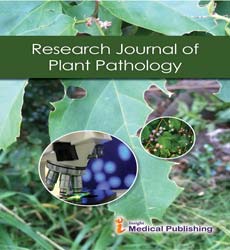MAJOR DISEASES OF POMEGRANATE
Abstract
Pomegranate (Punica granatum L.) is a popular fruit crop
grown all over the world in tropical and subtropical climates.
Despite the fact that the pomegranate tree is native to
Central Asia, it is remarkably adaptable to a wide range of
climatic and soil conditions. As a result, it is grown in many
different parts of the world. Over the last few decades, there
has been a massive expansion in area, output, and export all
over the world. Several types of fungus, bacteria, and
nematodes attack this fruit crop, resulting in significant yield
losses in terms of quality and quantity. Apart from that, fruit
cracking in ripe fruits is a common physiological problem that
results in increased economic losses for the pomegranate
fruit crop not only in India but around the world.
Predominantly, bacterial blight, wilt, heart rot of fruits and
fruit cracking have been identified major constraints while,
anthracnose and cercospora diseases are less economical
but sometimes under favourable environmental conditions
they may even cause complete failure of the crop. Because
of the growing restrictions on the use of chemical fungicides, as
well as environmental and human health concerns, a variety of
bio-agents, plant products, bacterial inoculants,bacteriophages,
and plant growth promoters and inducers have been explored
and used in disease control and to meet the growing demand
for low-input agriculture. The purpose of this chapter is to
describe the latest developments with regards to important
diseases of pomegranate and their sustainable management.
Open Access Journals
- Aquaculture & Veterinary Science
- Chemistry & Chemical Sciences
- Clinical Sciences
- Engineering
- General Science
- Genetics & Molecular Biology
- Health Care & Nursing
- Immunology & Microbiology
- Materials Science
- Mathematics & Physics
- Medical Sciences
- Neurology & Psychiatry
- Oncology & Cancer Science
- Pharmaceutical Sciences
